
There are more than 16,000 identified species and sub-species of ants worldwide, roughly 700 of which can be found in the United States.
Yet only a few dozen of these species are considered pests. Why? While ants may benefit the environment by aerating and redistributing nutrients in soil, for example, they can also damage crops, create structural damage to buildings, and bite and sting people and animals. In fact, ants are the No. 1 household and nuisance pest in the United States — and the highest revenue-generating pest for pest management professionals (PMPs).
Although small, their vast numbers, complex colony structures, and sociable behaviors make them difficult to control. It’s no surprise, then, that ants represent a high percentage of PMP callbacks and are one of the top pests for which PMPs would like to learn better strategies for control.
There are several key areas to focus your attention on, to better gain and maintain control of ants and limit customer callbacks.
Identification
In general, ants have noticeable waists, one or two nodes, clubbed (bent) antennae and longer legs (compared to a termite). Some species will have a stinger. When wings are present, the front wings will be longer than the back wings. Although generally similar, each ant species will vary in these characteristics. Proper identification is important because it will help with understanding the species’ colony structure and unique behaviors.
Colony structure
Once properly identified, it’s important to note colony structure, or which social form the species belongs to. There are two primary social forms.
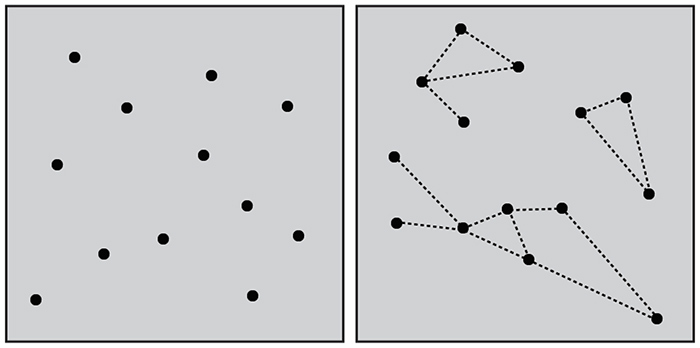
Graphic: MGK
In monogyne, or single-queen species, reproduction is accomplished by a single dominant queen. These ants are often larger in size and will vary in color and behavior. They typically occupy a single discrete nest, such as the large dome-shaped mounds built by fire ants.
Polygyne, also referred to as multi-queen species, have at least two reproductively active queens within a colony. Some colonies, like those of Argentine and odorous house ants, have hundreds or thousands of queens spread out over many interconnected satellite colonies.
Note: Fire ants have both single- and multi-queen social forms.
Behavior
Even though all ants are social, their behaviors can vary drastically by species. Nearly all ants use a complex suite of chemicals, called pheromones, to communicate with nestmates. They use pheromones to mark newly explored territory, to recruit nestmates to food, as a distress signal when they are in trouble, and to distinguish queens from workers. Additionally, many “farm” honeydew-producing insects such as aphids and scales. These insects are provided predator protection by ants in exchange for their sugary secretions.
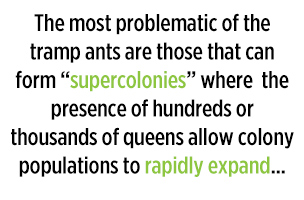 Polygyne, or multi-queen species, are often lumped into a group called “tramp ants.” These ants are easily transported globally through trade and commerce in containers, soil, plants and timber, and on machinery. They are aggressive and competitive, dominating food resources and available nesting sites. They have broad diets, can nest virtually anywhere, breed rapidly, and attain massive colonies that further help them exploit non-native environments.
Polygyne, or multi-queen species, are often lumped into a group called “tramp ants.” These ants are easily transported globally through trade and commerce in containers, soil, plants and timber, and on machinery. They are aggressive and competitive, dominating food resources and available nesting sites. They have broad diets, can nest virtually anywhere, breed rapidly, and attain massive colonies that further help them exploit non-native environments.
The most problematic of the tramp ants are those that can form “supercolonies,” where the presence of hundreds or thousands of queens allow colony populations to rapidly expand and dominate an environment by outcompeting native ants for resources.
Inspection
Where will you find ants on your next call?
Outdoors, nests will be found near sources of moisture and food, such as water features, sub-areas and plants that support aphids and scale insects (e.g. citrus trees, hibiscus, rose bushes, oak trees, willow trees, maple trees and pine trees). Ants might also nest behind exterior siding, usually near a moisture source.
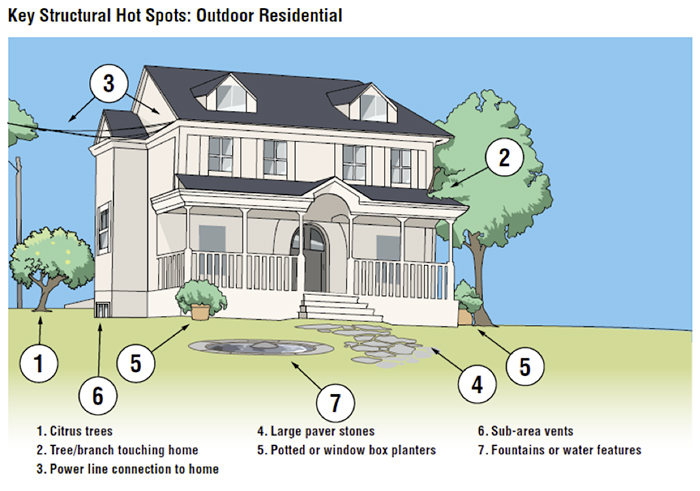
Graphic: MGK
Indoors, nests will be found near sources of moisture, such as voids near kitchen and bathroom sinks, around bathtubs and potted plants. Some species can also nest in crawlspace voids between insulation and the subfloor, and between floor joists, usually under moisture sources noted below.
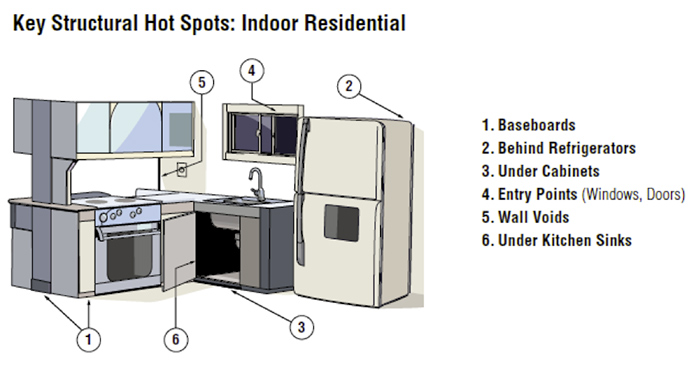
Graphic: MGK
Customer communication
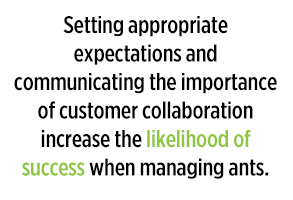 Setting appropriate expectations and communicating the importance of customer collaboration increase the likelihood of success when managing ants. Be sure to communicate what to expect before and after the treatment, as well as any conducive conditions that require remediation. Best results are seen when the technician and the customer work together. Here are a few key things to communicate to customers:
Setting appropriate expectations and communicating the importance of customer collaboration increase the likelihood of success when managing ants. Be sure to communicate what to expect before and after the treatment, as well as any conducive conditions that require remediation. Best results are seen when the technician and the customer work together. Here are a few key things to communicate to customers:
- For indoor control, stress the importance of sanitation. Any type of food or food particles can attract ants. Recommend they store food in sealed containers.
- For outdoor control, discuss the removal of plants that can attract ants. Alternatively, control aphids, whiteflies and other honeydew-producing insects on plants in and around structures. Owners should also trim trees and other landscape features away from the structure that serve as routes ants can use to enter buildings and homes. In addition, customers should remove or temporarily move any materials or vegetation that provide harborage for ants (e.g. large landscaping stones, pavers and leaf litter).
- Inform customers that it is normal to see foraging for a few days after treatment, depending on the environmental conditions. This is essential to minimize callbacks.

Photo: TimAbramowitz/E+ / Getty Images Plus/Getty Images
Treatment
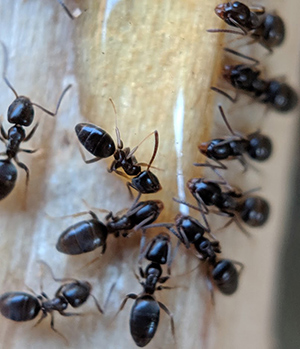
Photo: MGK
Use the inspection results to determine the right treatment plan. Treatment should be based on species and nest location. Remember that polygyne species often have multiple nest locations around a structure.
Individual ants are easy to kill, but ant populations are difficult to control. Be sure to look for the following features in ant control solutions.
Gel bait:
- Palatable to target species: Ants have varying dietary preferences that can change throughout the year. Some prefer sugar-based gel or liquid baits, while others prefer protein- or fat-based granular baits. Proper identification is key to using the right food source during treatment.
- Stable: Baits will likely be used in a wide variety of environmental conditions. It’s important that they aren’t too runny, which may cause them to slide off-site or create an unwanted mess. It’s equally important that they aren’t too thick, which can make them unpalatable and inedible.
- Fast acting, but not too fast: Homeowners want ant infestations taken care of yesterday. However, this is in direct conflict with most baits. You do not want the ants to die too quickly; there needs to be enough time for the foraging workers to transfer the bait back to the colony. Setting reasonable expectations with customers is key.
- Long-lasting control: Many polygyne ant species have multiple satellite colonies spread throughout the landscape. Taking out one nest can simply present an opportunity for another colony to move in. Long-lasting baits can guard against this and prevent re-infestation.
Residual concentrate:
- Non-repellent: You do not want to create a barrier, especially when treating indoors. If you use a repellent to treat ants indoors, it can create “budding,” a process by which a queen and accompanying workers leave the current nest to form a new colony. Using a non-repellent product increases the probability that ants come in contact with the treatment.
- Indoor and outdoor use: Efficiency is key. For severe infestations, or for ant species that nest both indoors and outdoors, having a single product that can be applied to all locations can optimize treatment.
- Outdoor broadcast use: Many species can have multiple nests across a property, which often requires off-structure or broadcast application. This also ensures that you treat the nests you can see — and increases the probability of contacting ones you can’t see.
- Long-lasting control: This means that you treat less often, and that it will keep working between treatment intervals.
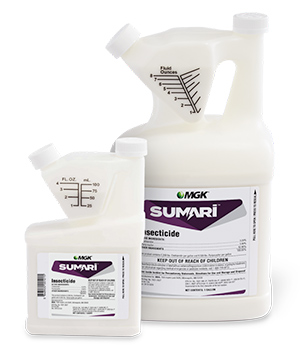
Photo: MGK
A tradition of innovation
MGK has been helping PMPs control pests for nearly a century, and continues to bring industry innovations to the forefront.
The company is proud to introduce Sumari® Insecticide to the market. All-new Sumari boosts productivity and simply gives you more control to get it right the first time.
- Non-repellent
- 90-day residual
- Kills multi-queen species
- Proven NyGuard® IGR insect growth regulator
- No signal word on label
“Make ant control simple,” you said. So we did: Deadly simple.
Visit MGK.com/Sumari to learn more about this revolutionary new product, and visit MGK.com/Ants to view ant control resources such as protocols, tips and tricks, and more!
This page was produced by North Coast Media’s content marketing staff in collaboration with MGK. NCM Content Marketing connects marketers to audiences and delivers industry trends, business tips and product information. The Pest Management Professional editorial staff did not create this content.
Header photo: Cabezonication/iStock / Getty Images Plus/Getty Images